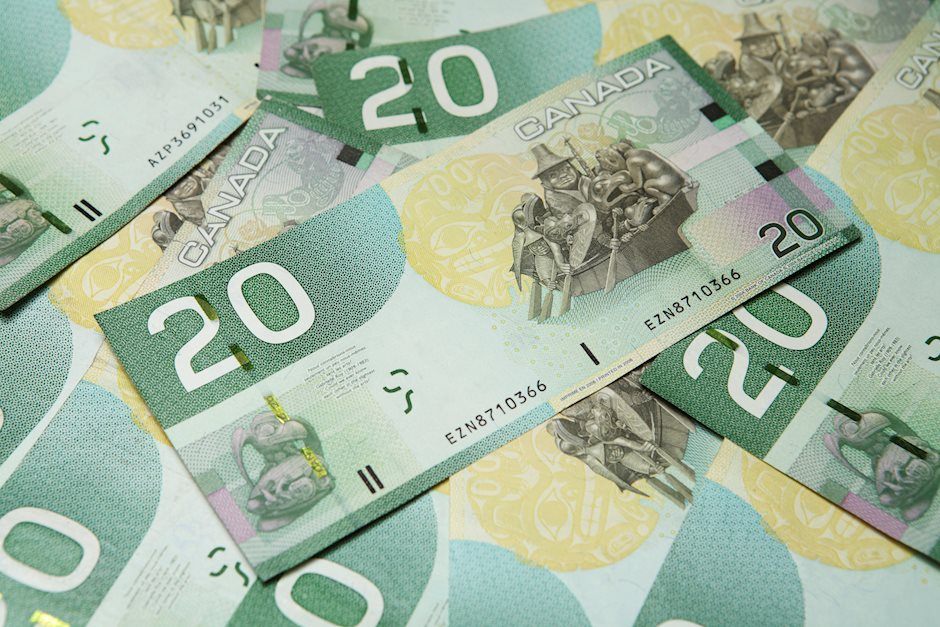USD/CAD hovers near nine-month high below 1.3900 with US NFP in focus
- USD/CAD trades near a non-month high near 1.3900 ahead of US NFP data for July.
- Market sentiment remains risk-averse amid potential slowdown fears in the US.
- The BoC could cut interest rates again.

The USD/CAD pair trades close to a nine-month high at 1.3890 in Friday’s European session. The Loonie asset exhibits strength amid dismal market moods. Fears of a severe slowdown in the United States (US) economy have deepened after the US ISM Manufacturing PMI report showed a sharp contraction in factory activities in July and Initial jobless claims reading came in highest in 11 months for the week ending July 26.
S&P 500 futures have posted significant losses in European trading hours, exhibiting a sharp decline in investors’ risk appetite. Meanwhile, investors jumped for the Japanese Yen (JPY) and the Swiss Franc (CHF) as safe-haven bets.
The US Dollar Index (DXY), which tracks the Greenback’s value against six major currencies, slumps to near 104.10. 10-year US Treasury yields have plummeted further to 3.94% as speculation for the Federal Reserve (Fed) to begin reducing interest rates from the September meeting appears certain.
In Friday’s session, the US Dollar (USD) will be impacted by the US Nonfarm Payrolls (NFP) data for July, which will be published at 12:30 GMT. The Employment data is expected to show that 175K fresh workers were hired in July, lower than the 206K payrolls recorded in June. Annual Average Hourly Earnings data is expected to have decelerated to 3.7%.
Meanwhile, the Canadian Dollar (CAD) weakens on expectations that the Bank of Canada (BoC) could cut interest rates again. Price pressures in the Canadian economy have softened significantly, and investors remain concerned over deteriorating spending and investment. This would force the BoE to extend the policy-easing spell.
Canadian Dollar FAQs
The key factors driving the Canadian Dollar (CAD) are the level of interest rates set by the Bank of Canada (BoC), the price of Oil, Canada’s largest export, the health of its economy, inflation and the Trade Balance, which is the difference between the value of Canada’s exports versus its imports. Other factors include market sentiment – whether investors are taking on more risky assets (risk-on) or seeking safe-havens (risk-off) – with risk-on being CAD-positive. As its largest trading partner, the health of the US economy is also a key factor influencing the Canadian Dollar.
The Bank of Canada (BoC) has a significant influence on the Canadian Dollar by setting the level of interest rates that banks can lend to one another. This influences the level of interest rates for everyone. The main goal of the BoC is to maintain inflation at 1-3% by adjusting interest rates up or down. Relatively higher interest rates tend to be positive for the CAD. The Bank of Canada can also use quantitative easing and tightening to influence credit conditions, with the former CAD-negative and the latter CAD-positive.
The price of Oil is a key factor impacting the value of the Canadian Dollar. Petroleum is Canada’s biggest export, so Oil price tends to have an immediate impact on the CAD value. Generally, if Oil price rises CAD also goes up, as aggregate demand for the currency increases. The opposite is the case if the price of Oil falls. Higher Oil prices also tend to result in a greater likelihood of a positive Trade Balance, which is also supportive of the CAD.
While inflation had always traditionally been thought of as a negative factor for a currency since it lowers the value of money, the opposite has actually been the case in modern times with the relaxation of cross-border capital controls. Higher inflation tends to lead central banks to put up interest rates which attracts more capital inflows from global investors seeking a lucrative place to keep their money. This increases demand for the local currency, which in Canada’s case is the Canadian Dollar.
Macroeconomic data releases gauge the health of the economy and can have an impact on the Canadian Dollar. Indicators such as GDP, Manufacturing and Services PMIs, employment, and consumer sentiment surveys can all influence the direction of the CAD. A strong economy is good for the Canadian Dollar. Not only does it attract more foreign investment but it may encourage the Bank of Canada to put up interest rates, leading to a stronger currency. If economic data is weak, however, the CAD is likely to fall.
Author

Sagar Dua
FXStreet
Sagar Dua is associated with the financial markets from his college days. Along with pursuing post-graduation in Commerce in 2014, he started his markets training with chart analysis.

















